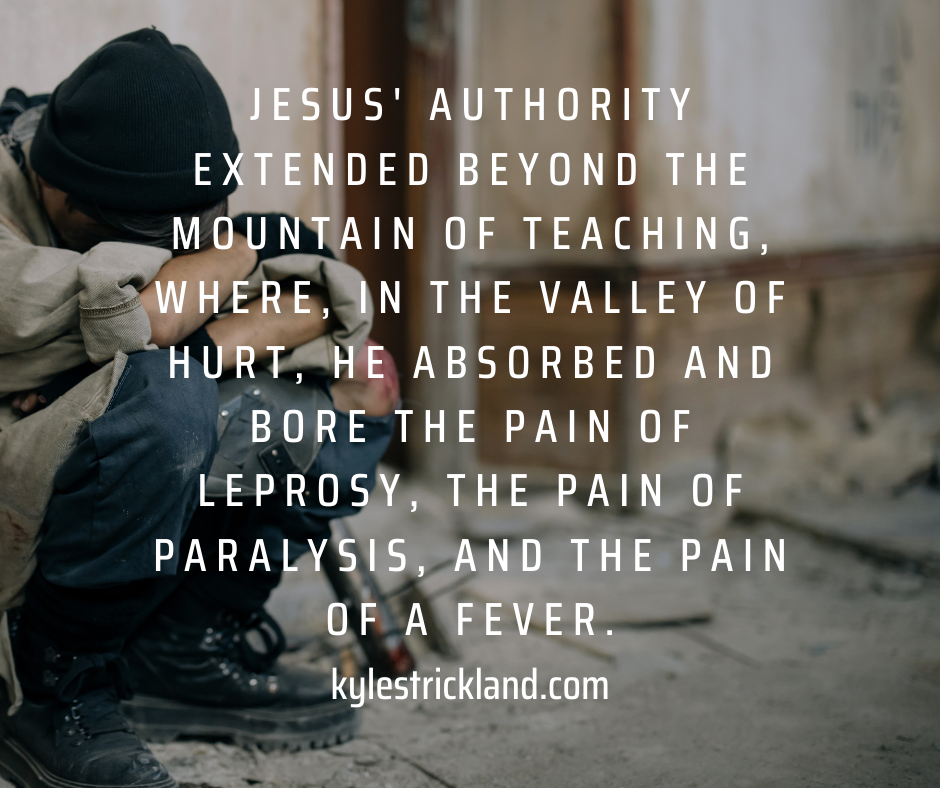Read Matthew’s remarkable commentary about Jesus after Jesus concluded his Sermon on the Mount:
When Jesus had finished saying these things, the crowds were amazed at his teaching, because he taught as one who had authority and not as their teachers of the law.
Matthew 7:28-29
Matthew used the imperfect tense of the verb “amazed,” a tense to describe a past action with an incomplete resolution. In other words, the crowds talked for days about Jesus.
Jesus stood alone among a crowded scene of scribes who could only depend on the teachings of previous scribes or their exegetical work of the Torah. Yet on the Mount, Jesus used phrases like “I say to you …” and “these words of mine …,” locating the authority of his teaching to his knowledge and information. Consider this description of Jesus’ teaching from D.A. Carson in his commentary on Matthew:
Jesus is not an ordinary prophet who says, “Thus says the Lord!” Rather, he speaks in the first person and claims that his teaching fulfills the [Old Testament], that he determines who enters the messianic kingdom, that as the Divine Judge he pronounces banishment, that the true heirs of the kingdom will be persecuted for their allegiance to him, and that he alone fully knows the will of the Father.
Matthew & Mark, page 232.
But words without action are empty. Jesus knew this when he descended the mountain of information to walk in the valley of hurt – the following two chapters in Matthew contain half of the healing stories in the gospel. Without fanfare or ritual, the Son of God (again) rendered the stipulations of the Torah unnecessary by healing outsiders: a man with leprosy, an enslaved man who was paralyzed, and Peter’s mother-in-law. Matthew framed these healings, and others, as a further example of Jesus’ authority:
That evening they brought to him many who were oppressed by demons, and he cast out the spirits with a word and healed all who were sick. This was to fulfill what was spoken by the prophet Isaiah: “He took our illnesses and bore our diseases.”
Matthew 8:16-17 (ESV)
Jesus’ authority extended beyond the mountain of teaching, where, in the valley of hurt, he absorbed and bore the pain of leprosy, the pain of paralysis, and the pain of a fever. This is no small thing. He did not become afflicted with leprosy or paralysis or fever – he did not receive the illness in the place of those he healed. But the sin of Adam unleashed a myriad of consequences that aren’t necessarily erased, namely pain and death; thus, the restoration of the sick required the pain to be displaced. Jesus chose to feel the hurt. He is the only person with the authority – the power – to do so.

For those who doubt, consider these words of Paul:
God made the one who did not know sin to be sin for us, so that in him we would become the righteousness of God.
2 Corinthians 5:21 (NET)
Jesus bore the punishment for every sin throughout time, feeling a pain not limited to physical hurt. Again, illness is but one of the consequences unleashed by the sin of Adam, leaving us to now live in a system of decay. By being sin, then, Jesus consequentially bore the hurt of every illness every person has ever felt, even as every person is not completely healed.
